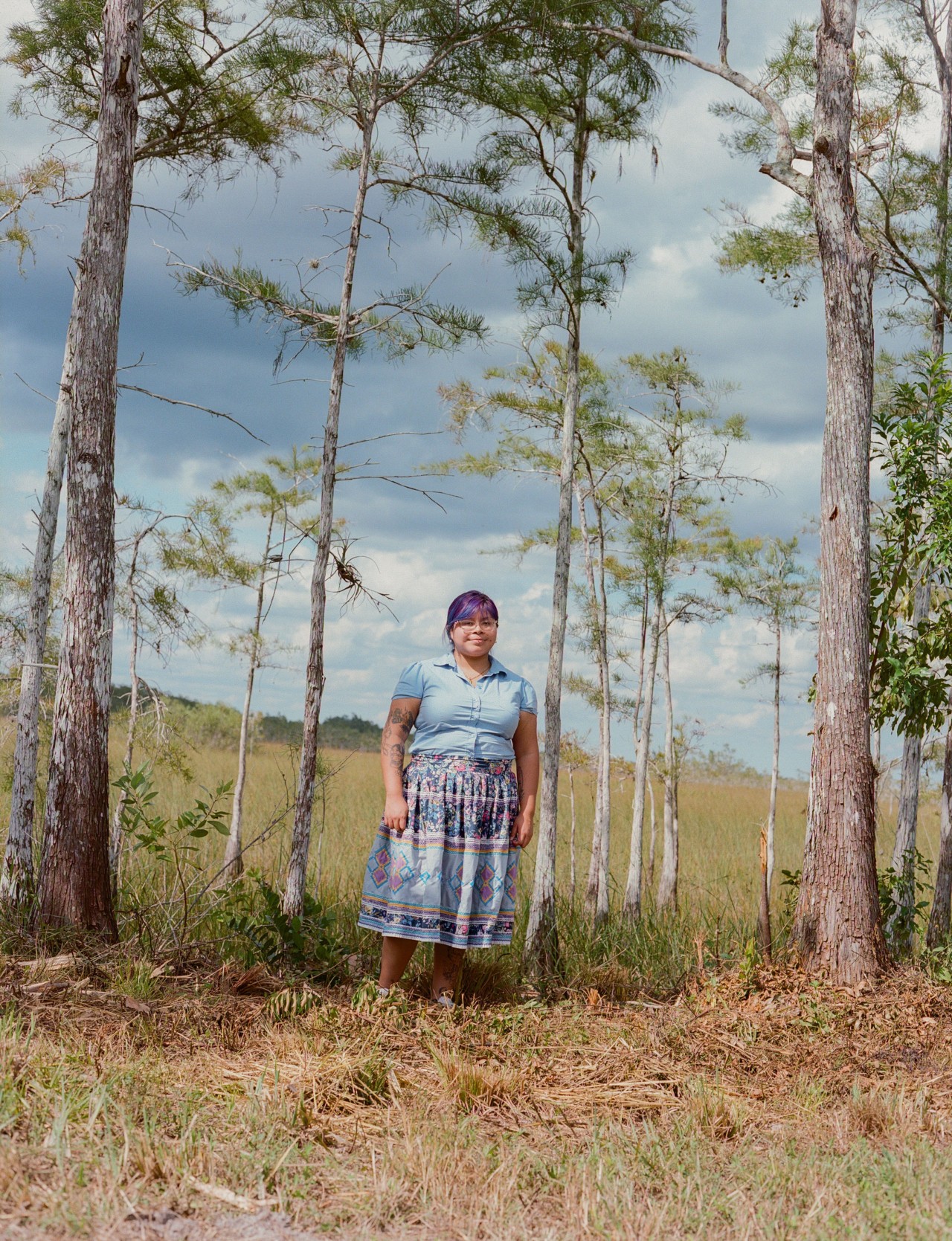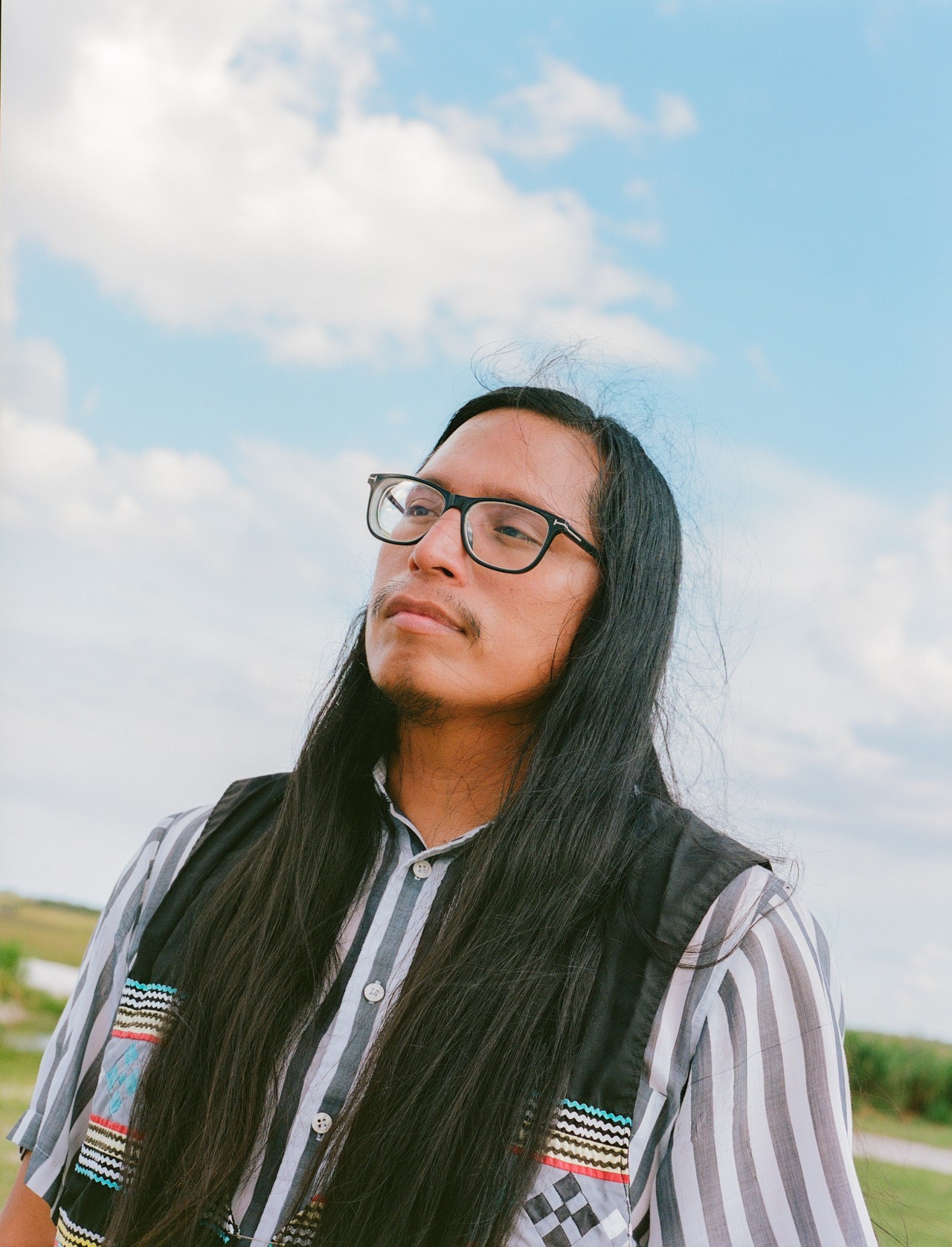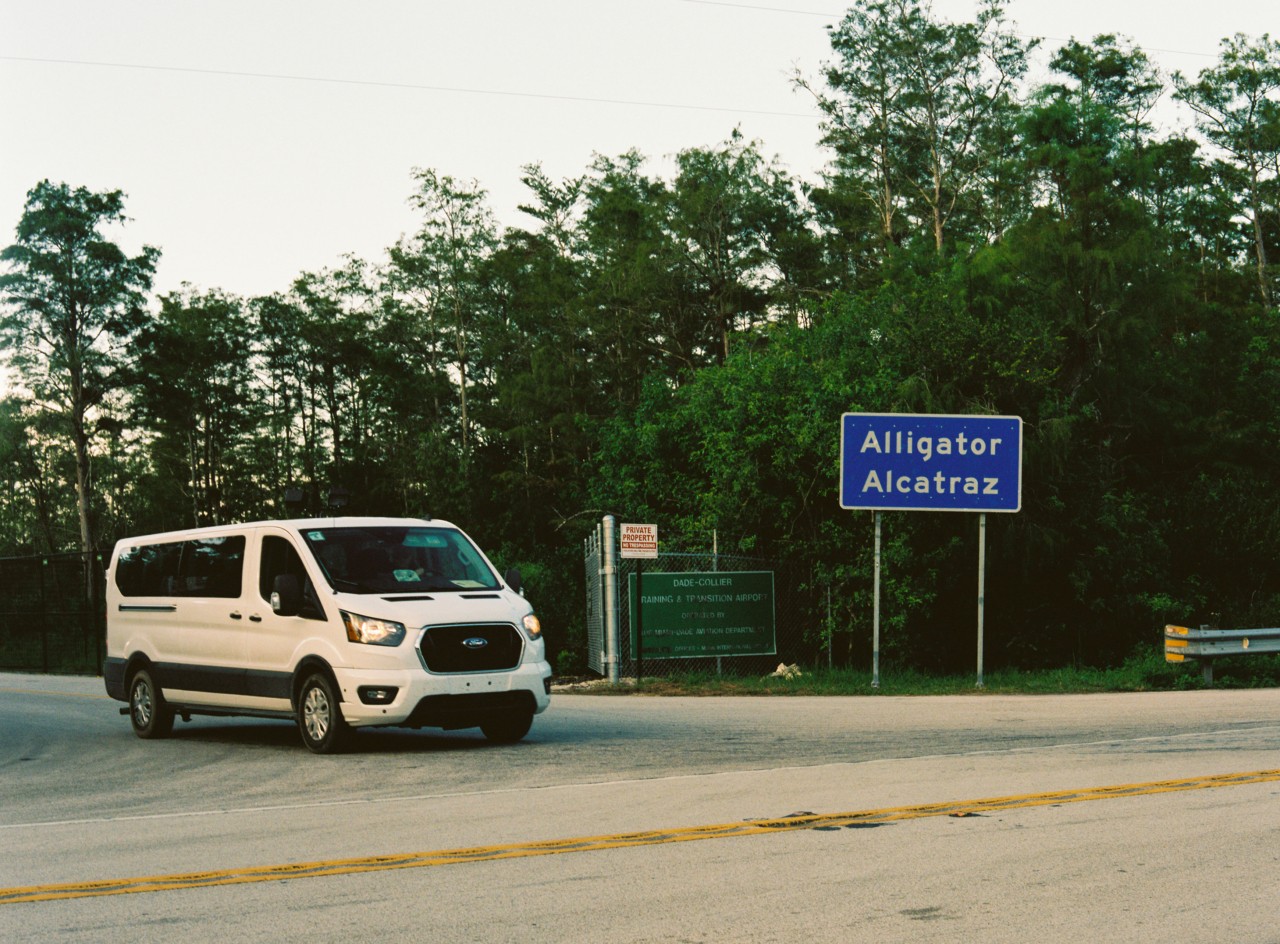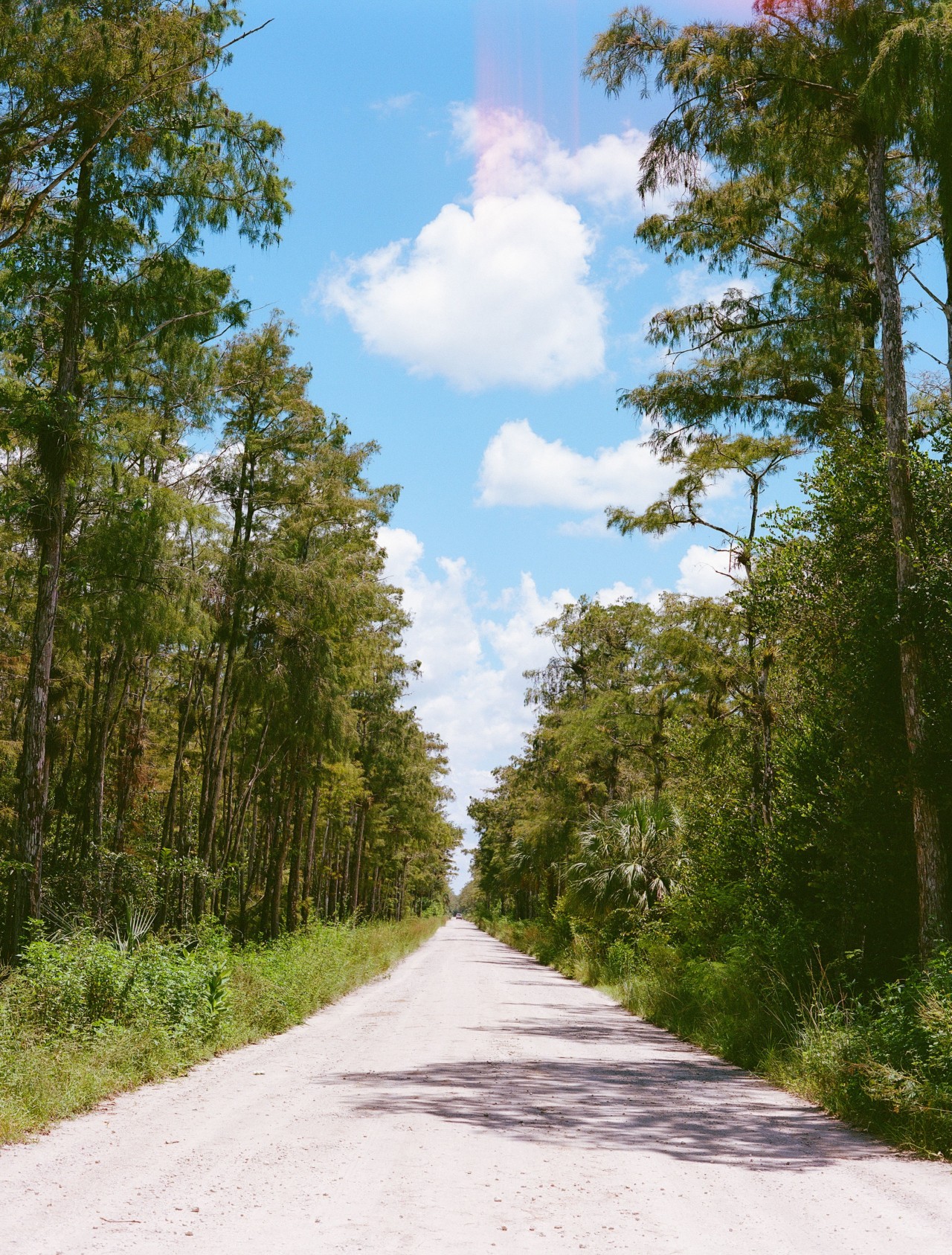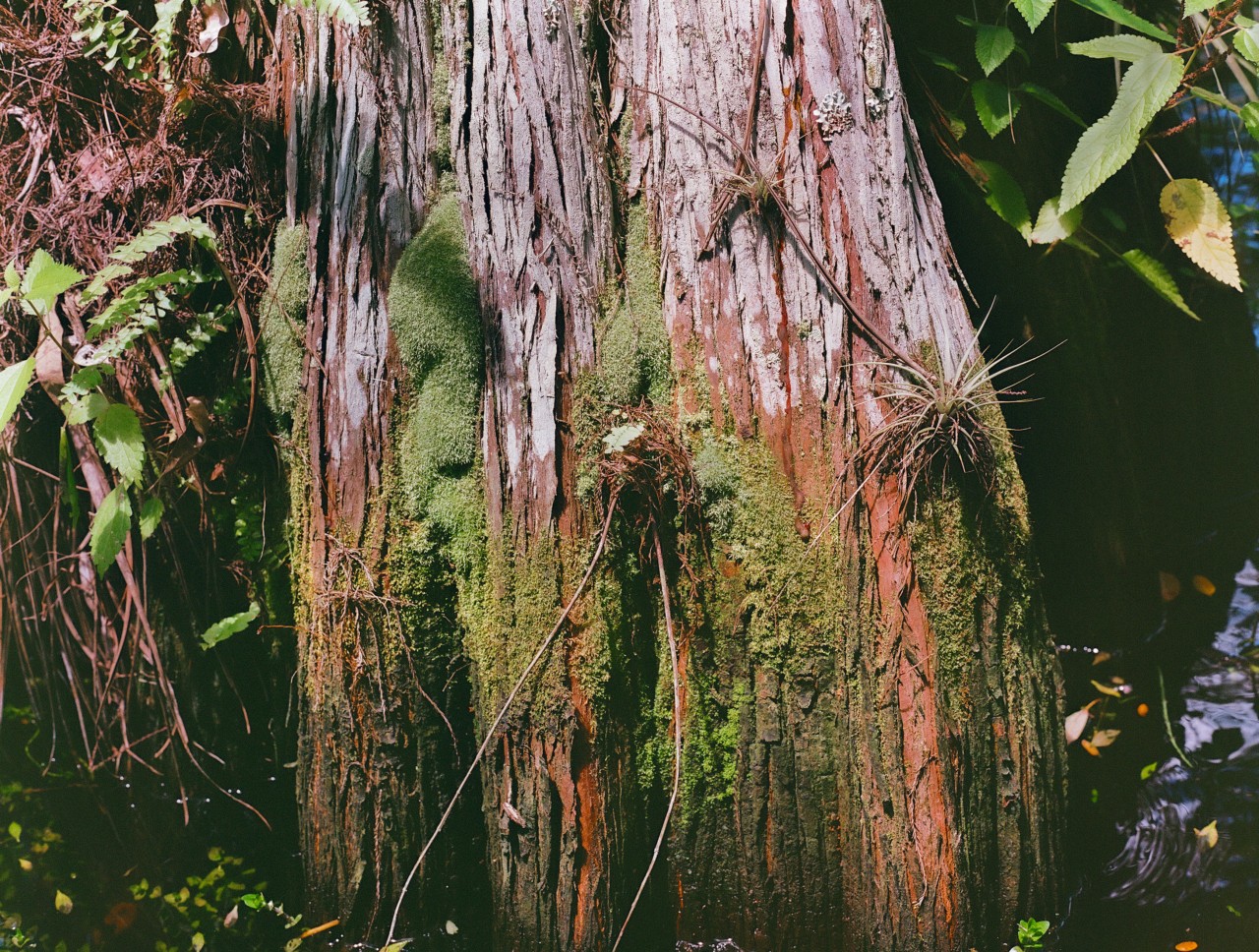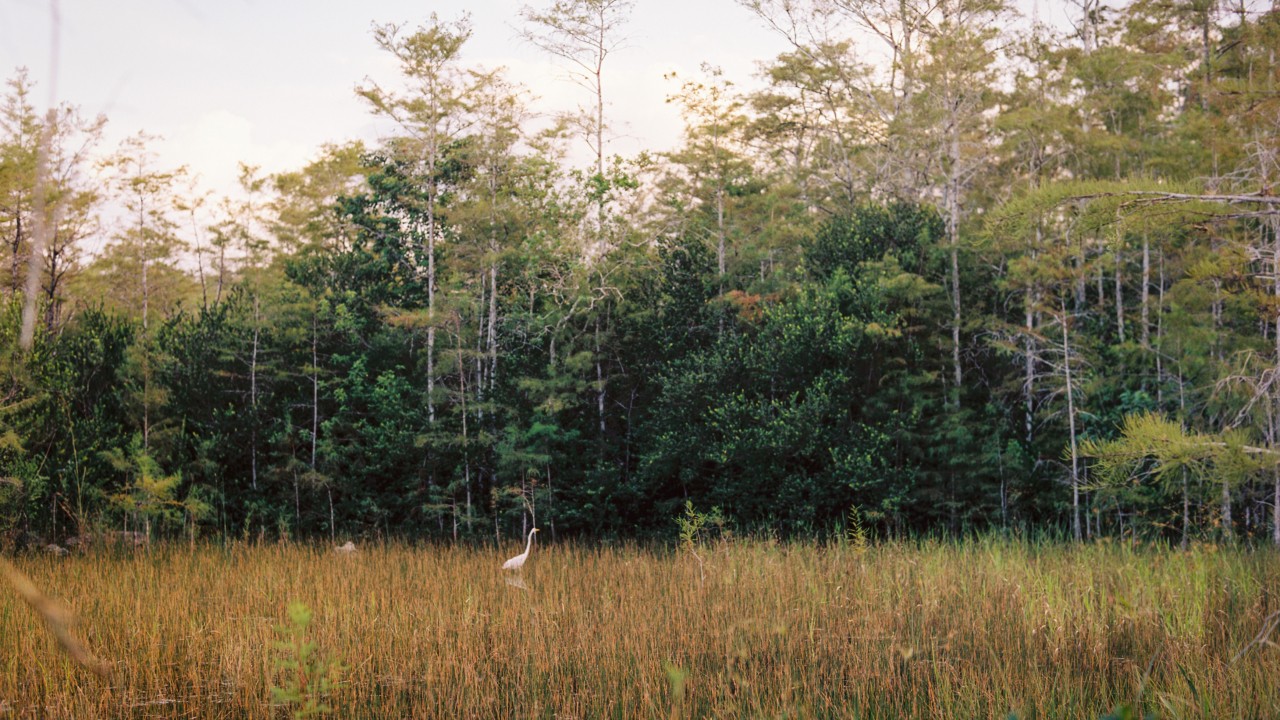
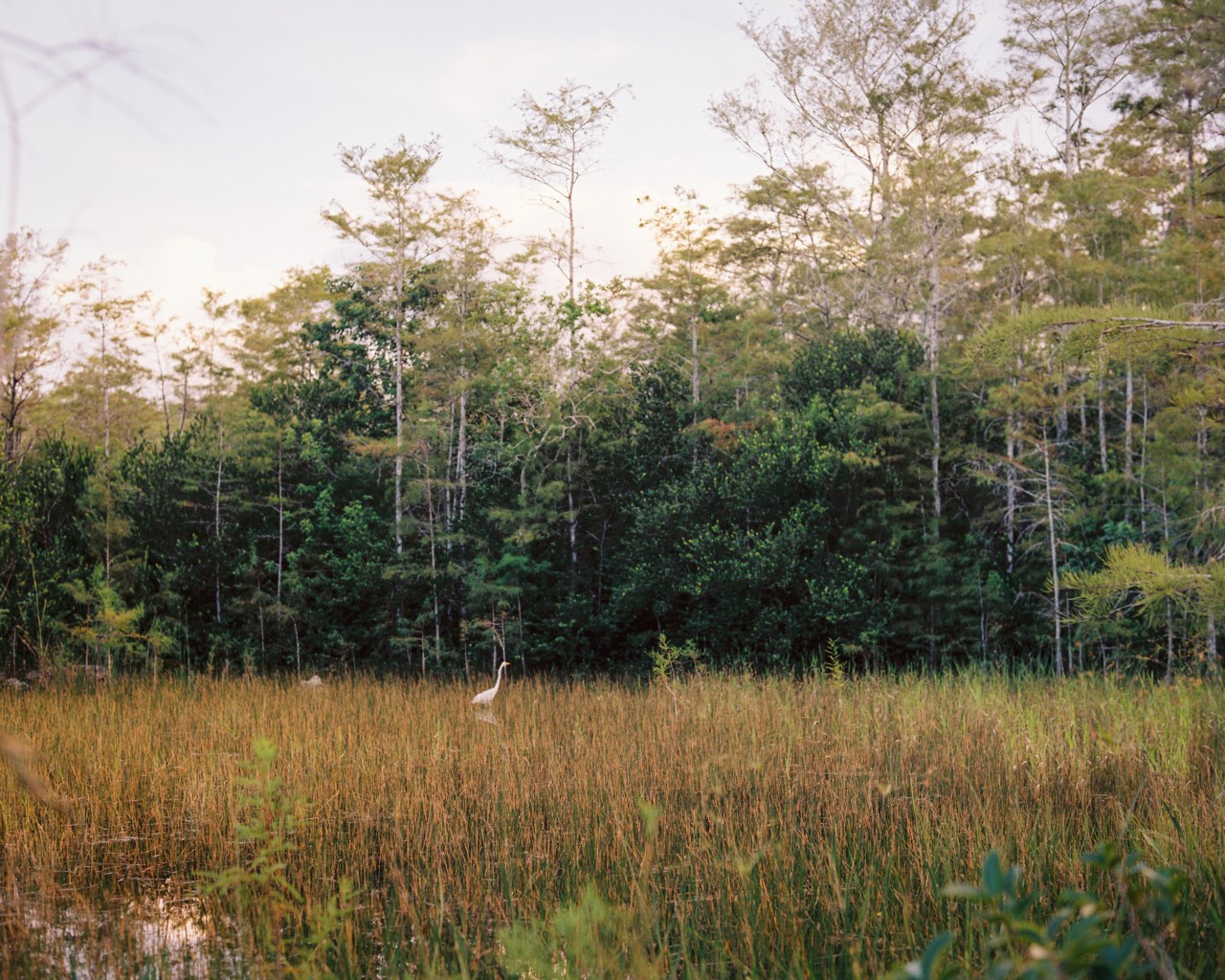
Words by Monica Uszerowicz
Photographs by Vanessa Diaz
A controversial immigration detention center nicknamed “Alligator Alcatraz,” built almost overnight in the middle of the Florida Everglades in June, has been ordered to shut down within 60 days after a federal judge issued a preliminary injunction. The ruling puts a temporary halt on expansion, forces the gradual transfer of detainees, and sets the stage for dismantling the site, a major victory for environmental groups, the Miccosukee Tribe, and immigrant-rights coalitions—led in court by Friends of the Everglades and the Center for Biological Diversity, represented by Earthjustice attorneys Scott Hiaasen and Paul Schwiep.
The facility has become a flashpoint in Florida, drawing legal challenges, environmental concerns, and Indigenous opposition. Critics have repeatedly claimed the state bypassed required environmental reviews and ignored tribal sovereignty in its rush to build a prison for migrants on ecologically sensitive, historically contested, and sacred land; Trump claims that as a state facility, federal regulations are inapplicable. What’s at stake, activists have argued, is not only the health of the Everglades, but the rights of those who have long lived in and stewarded it as well as the safety and legal rights of those now being held within its borders.
Now, the 60-day shutdown order has transformed the battle into one of enforcement and accountability, with the state already appealing the ruling.


It’s not merely the construction that has drawn scrutiny. The name itself mocks the region’s biodiversity and leans on long-standing tropes of alligators preying on the vulnerable, casting the Everglades as a worthless swamp and framing detained immigrants as prey. “People get out and there’s not much waiting for them other than alligators and pythons,” Florida Attorney General James Uthmeier announced in a June 20 commercial promoting the Everglades detention center, his voice set against an aggressive guitar riff. “Nowhere to go, nowhere to hide.”
The Florida Division of Emergency Management sent letters that same week to Collier and Miami-Dade counties, seeking to purchase the Dade-Collier Training and Transition Airport as the facility’s site. That jetport was destined to be the world’s largest when construction began in 1968. Author and conservationist Marjory Stoneman Douglas founded Friends of the Everglades in response. Alongside the Miccosukee Tribe, the organization successfully advocated to stop construction, a victory that prompted the establishment of the National Environmental Policy Act and that mirrors the new ruling.
Today, the NEPA requires that the federal government weigh the environmental effects of any federal projects before building them. When Miami-Dade County’s mayor raised concerns about the “scope and scale of the state’s effort, particularly regarding the environmental safeguards,” the state issued a notice of intent to seize the property under Gov. Ron DeSantis’s 2023 emergency order on “illegal immigration.” Trucks rolled in on June 23. Private contractors erected the prison quickly and haphazardly. Uthmeier had predicted Alligator Alcatraz would take 30 to 60 days to complete. It opened less than a week later.

The prison stands in the middle of the Florida Everglades—a place described in writing as both singular and plural. The Everglades is, the Everglades are.
It is one vast region—more than 2 million acres of wetlands stretching across Central and South Florida—but also a collection of borderless ecosystems: marshes, hardwood hammocks, mangrove forests, and the slow-moving river that the Miccosukee and Seminole coined the “River of Grass,” after “Pahayokee,” “grassy-waters” in the Elaponke language. Sun-bleached in its prairies and shadowed in its cypress domes, the Everglades once covered a land mass nearly twice its current size.
Today, it encompasses the Big Cypress National Preserve, Everglades National Park, and several water conservation areas. It begins at Lake Okeechobee and spreads south toward the Gulf of Mexico and the Atlantic Ocean. Its waters have been drained and diverted—its natural cycles of flood and drought subdued—by a long line of men: real estate baron Hamilton Disston, who began draining in 1881; Florida Gov. Napoleon Bonaparte Broward, who pledged in 1904 to “drain that abominable pestilence-ridden swamp”; President Herbert Hoover, in 1929, in an attempt to control flooding; and the United States Army Corps of Engineers, who still control the flow today. Its beauty and stillness remain, however, unrelenting.
“All that fuel that’s on the site, all that sewage, will end up in the environment. The chemicals that are sprayed for mosquitoes, the generators they’re powering—that’s going to be absorbed; the rain will fall and spread everywhere.”
During the Seminole Wars, which took place between 1816 and 1858, the Everglades—seen by U.S. soldiers as a perilous, sweaty wasteland—became a sanctuary for the Indigenous Miccosukee and Seminole. Their descendants remember. William J. Osceola, secretary of the Miccosukee Business Council, recalled how “our ancestor Abiaka, also known as Sam Jones, told the tribal members, ‘Let’s go deeper into the swamp… It’ll protect us.’ He was like a Miccosukee Moses. The Everglades saved us from total removal and destruction… Only we understand the full breadth of its context over time.” It’s a sentiment shared by Betty Osceola, an educator, activist, and member of the Miccosukee Panther Clan. “The Everglades was, in [the settlers’] minds, a vast wasteland,” she said. “They were thinking we would just perish. Here we are years later, thriving.”
In her 82-page order, U.S. District Judge Kathleen Williams wrote that the state “did not consider alternative locations” in its rush to build and that the ruling upholds “the basic requirements of legislation designed to fulfill [decades of] promises” to restore and protect the Everglades. In recent months, a place that once sheltered the persecuted was reshaped to detain and deport. She further stated federal immigration enforcement as a “key driver” of the facility and, depending on federal funding and standards, Alligator Alcatraz is also subject to federal environmental laws.
Alligator Alcatraz’s opening arrived just weeks after the approval of a program that would allow Miami’s local law enforcement to collaborate with U.S. Immigration and Customs Enforcement. The program already existed in Collier County. “We knew having a detention center on the Collier County line meant continued detainments, even at simple traffic stops,” said Marisol Tenorio*, a volunteer with Unidos Immokalee, an Immokalee-based collective formed in response to Florida’s anti-immigrant legislation, adding that a significant portion of Immokalee residents are immigrants. “It would mean more horror.”


Florida lawmakers who visited the facility on a truncated tour in the following weeks reported cages packed “wall-to-wall” with up to 32 detainees, crying for help amid heat, meager meals, and swarms of bugs. One detainee, who had suffered a fungal infection from the water on the facility floor, spoke out about the facility’s conditions at a recent press conference via telephone—as of this writing, his family hasn’t heard from him since. Only a third of detainees have a criminal conviction, yet details about those convictions or how detainees are targeted remain undisclosed.
By the time of the ruling, the facility had already begun wreaking devastating environmental damage. Big Cypress’s dark skies are now lit by stadium-bright lights, visible up to 15 miles away, said Eve Samples, executive director of Friends of the Everglades, referencing images Betty Osceola herself had captured. Panthers, deer, and the endangered Florida bonneted bat are getting lost on the site, likely ending up on roads. Roughly 20 acres of new pavement have been laid despite the state’s claim it would rely on the preexisting jetport infrastructure.
Such testimony proved pivotal in court. In her injunction, Judge Williams cited the state’s failure to weigh these environmental impacts in its rush to build the facility. “You have to take a really hard look before you take any action that might impact wetlands,” Samples told Atmos.
Advocates now warn that dismantling the facility must include repairing the damage already done: removing toxic infrastructure, restoring wetlands, and honoring Indigenous stewardship. “All that fuel that’s on the site, all that sewage, will end up in the environment,” said Betty Osceola. “The chemicals that are sprayed for mosquitoes, the generators they’re powering—that’s going to be absorbed; the rain will fall and spread everywhere. Indigenous people are recognized as good stewards of the land. We know what we’re talking about when we’re advocating for the environment.”

The destruction caused by Alligator Alcatraz echoes histories of dispossession of Florida’s Indigenous and immigrant communities, many of whom are themselves native to what’s now called the Americas.
While Friends of the Everglades’ lawsuit targeted environmental harm, the Miccosukee legal intervention argued that the land and its people cannot be separated, their request stating: “Miccosukee people have lived in and cared for the land now known as the Big Cypress National Preserve since time immemorial.” For the Miccosukee, protecting the land means protecting their people. “When I go out there and stand there in the environment, I find myself apologizing to it,” said Betty Osceola. “The land just wants people to understand why this is wrong.”
In the Everglades, land is either repeatedly cleared in the name of conservation or repurposed for state control. Last year, the National Park Service proposed designating 200,000 acres of Big Cypress as wilderness—a move that “would wipe out any semblance of tribal history on that land, including people still living there,” said William Osceola. “Wilderness designations, historically, imply that nobody lives there. We have over a dozen traditional camps and two ceremonial grounds.” Kendal Osceola, a Miccosukee Embassy Fellow and Political Science student, added: “The Miccosukee people are at home in Big Cypress. For generations, we have dealt with government officials who do not recognize our rights or our lands.”
The designation, which was ultimately dropped, revived memories of the 1947 creation of Everglades National Park, which forced the Miccosukee and Seminole off their lands. “When the Jetport was proposed, even when Big Cypress National Preserve was created, we wondered if they were going to kick everybody out, like they did when the National Park was designated,” said Betty Osceola. “My people are wondering again, Are they going to try to kick us out?”

“A lot of the young Indigenous community, including myself—we don’t want to silence immigrant voices. Our fight is their fight.”
Though the lawsuits centered on environmental impacts, advocates say the fight to see the permanent closure of Alligator Alcatraz is inseparable from issues of Indigenous rights, immigration enforcement, and racialized policing. The facility’s very design turns the environment into a tool of state violence, deploying wildlife and weather as threats against “criminals” whose own ancestors knew how to steward the land better than today’s officials. The court’s ruling reflected at least part of that broader case.
“This impacts our communities as well,” said Tenorio. “The people interned at this detention center, and the people in our community, have been displaced by imperialism, climate change, extreme poverty, and foreign policy decisions made by the U.S.” For Tenorio and others, the Everglades is a place of connection where multiple communities co-exist honestly and authentically. “I’m first-gen, trying to hold onto the cultural practices of my own lineages,” she added. “[Betty’s] prayer walks, being in nature—it makes you feel beholden to becoming a better steward of the place where your feet land.”
That sense of continuity also shapes how other Miccosukee citizens have understood the fight. “Look at the history of reservations in this country,” said William Osceola. “Anytime they tried to round up other people they weren’t comfortable with, such as Japanese Americans during World War II—many of those internment camps were on reservation lands. That sense of history is not lost on us.”
That history, organizers say, has often felt disheartening in its repetition. But it can also serve as a reminder. New groups had emerged to carry the fight against Alligator Alcatraz forward, including the Indigenous youth-led Unconquered Coalition. Others, like Sin Fronteras and the Skunk Ape Liberation Union, continue to speak out and organize, focusing on both Indigenous sovereignty and immigrants’ civil rights. As Friends of the Everglades’ Samples noted before the ruling, the Jetport fight showed it’s never too late to stop destructive projects (the Jetport itself wasn’t shut down until a runway, the detention center’s foundation, had already been constructed). That lesson has so far proven true again with Alligator Alcatraz.
There is something sacred in the Everglades: Its cathedral quiet, its long-blessed soil, its indelible mark on the state and shape of Florida itself. That sacredness has stood in direct opposition to the brutality of Alligator Alcatraz, a facility that, during its existence, has harmed innocent people, torn families apart, and scarred the land. Its court-ordered shutdown is both a reprieve and a reminder: the Everglades has long protected those who honor it, and advocates say it’s time policymakers do the same.
“A lot of the young Indigenous community, including myself—we don’t want to silence immigrant voices,” Seminole artist Dakota Osceola said, speaking to the sense of unity embedded in the landscape. “Our fight is their fight.”

Editor’s Note: Some names in this story have been changed to protect the privacy and safety of those interviewed.
Correction,
August 26, 2025 9:00 am
ET
This article was updated to include the name of the legal groups who represented Friends of the Everglades and the coalition in the case.
‘Alligator Alcatraz’ Ordered to Close in Major Everglades Victory
